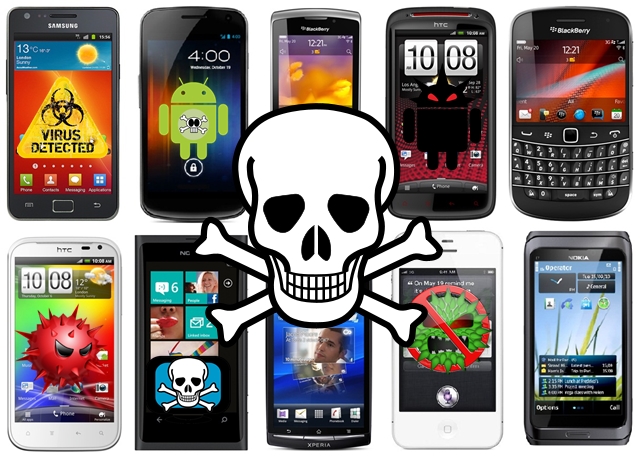According to a study by Alcatel-Lucent’s Motive Security Labs, users around the world are being spied upon by extremely sophisticated mobile malware and reportedly, around 16million mobile devices are infected. This means confidential information and data plans are being stolen without our knowledge.
The study revealed that in 2014, the rate of malware infectivity in mobile devices saw a 25% increase in comparison to the year 2013’s 20% increase.
This rate of increment is so incredible that Android devices have now equalled Windows laptops, which used to be the main target of cybercrimes. The infection rates between Windows and Android devices are now even, that is, 50/50 as of 2014.
Kevin McNamee, the director of Motive, states in a blog entry:
“With one billion Android devices shipped in 2014, the platform is a favorite target of cybercriminals who can have lots of infection success without a lot of work. Android is more exposed than rivals because of its open platform and by allowing users to download apps from third-party stores where apps are not always well-vetted.”
Less than 1% of the infections are found in Blackberry and iPhone smartphones. The rate of mobile infections was 0.68% in 2014.
Why Malware growth is continuing at a fast Pace?
Malware growth is well supported by the very fact that a majority of mobile devices remain unprotected since their users are not aware of or tend to ignore security precautions.
The survey revealed that 65% of the subscribers expect that their service provider is responsible for protecting their devices.
55% respondents agreed to pay for this service. Service providers, conversely, would be very interested in ensuring that malware is prevented from invading their network for the sake of retaining their subscribers.
Alcatel-Lucent’s network intelligence GM, Patrick Tan, explains that:
“With malware attacks on devices steadily rising with consumer ultra-broadband usage, the impact on customer experience becomes a primary concern for service providers. As a result, we’re seeing more operators take a proactive approach to this problem, by providing services that alert subscribers to malware on their devices along with self-help instructions for removing it.”
With mobile command and control protocols sophistication increasing rapidly, the increment in mobile malware rate is no surprising at all. For example, the use of mobile spyware has increased tremendously since users are now more interested in tracking the location of the device and monitor incoming and/or outgoing calls, emails, SMS and web browsing.
Moreover, the first DDoS (distributed denial of service) attacks propelled from mobile devices occurred in 2014 signifying that the alleged hacktivism movements against mobile technology may be launched in the coming years.
McNamee notes:
“The rise of mobile malware threats isn’t unexpected. But as Google Wallet, Apple Pay and others rush to bring us mobile payment systems, security has to be a top focus. And malware concerns become even more acute in the workplace, where more than 90% of workers admit to using their personal smartphones for work purposes.”
For residential networks, the infection rates also significantly increased during 2014 since 13.6% devices were infected with malware, which shows a 5% increment in comparison to the rate in 2013, revealed Motive’s malware report.
This rise is largely due to the rise in infections caused by moderate threat level adware. High-profile threats like rootkits, bots and banking Trojans remained steady with 5%.
DDoS attacks also saw a rise in 2014, according to the Motive report, and infrastructure components like DSL modems, home routers, mobile Wi-Fi hotspots, cable modems, NTP servers and DNS servers were utilized for this purpose.
It was also discovered that consumers who do not shop online due to the fear of getting their debit/credit card information leaked are actually exposed to greater risk.
Apparently, reckless retail cybersecurity violations during 2014 were all caused by malware infections in point-of-sale terminals and cash registers instead of online stores. This happened because stolen cards from online retailers are usually not as valuable for hackers since these can only be used for making purchases online.
However, mobility will be the real threat in future.
“By the end of 2015, the number of smartphone users worldwide will surpass 2 billion, representing more than a quarter of the global population. There’s no reason to believe malware threats won’t be even more intrusive this year and the foreseeable future,” says McNamee.











